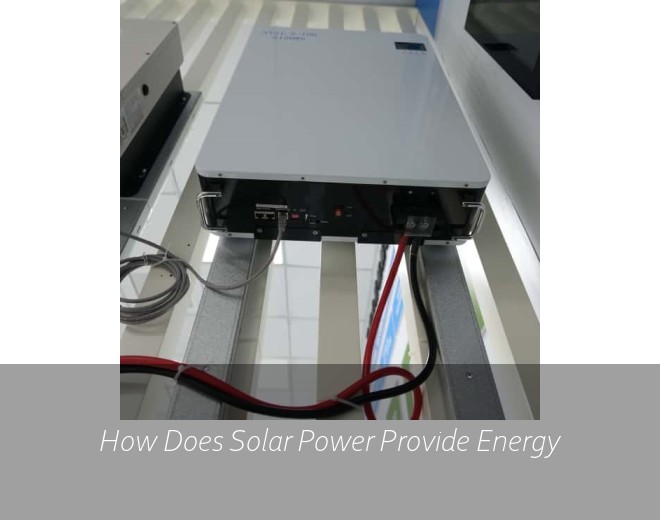How Does Solar Power Generate Energy

Table of Contents
The Photovoltaic Magic Trick
Ever wondered how those sleek panels on rooftops convert sunlight into electricity? Let's start with the basics: solar panels contain photovoltaic (PV) cells, typically made of silicon. When photons from sunlight hit these cells, they knock electrons loose—a process we call the photovoltaic effect. Think of it like a microscopic game of pool where sunlight particles trigger an electric current.
Wait, no—let me clarify. It's not exactly magic, though it feels that way. Each PV cell acts like a solar-powered sandwich. The top layer contains phosphorus (extra electrons), the bottom layer has boron (missing electrons). When sunlight bridges this gap, voilà! Electricity starts flowing.
From Sunbeams to Electrons
The real magic happens through solar energy conversion. Here's the step-by-step:
- Sunlight hits the PV cell with enough energy to break electron bonds
- Freed electrons move toward the cell's front surface
- This electron flow creates direct current (DC) electricity
- An inverter converts DC to alternating current (AC) for home use
But here's the kicker: modern solar panels only achieve 15-22% efficiency. Why can't we capture more? Well, some photons carry too little energy (infrared) or too much (ultraviolet), slipping through our energy net. Researchers in Germany recently developed tandem cells using perovskite layers that could push efficiency beyond 30%.
Solar Energy in Action
Let's get practical. A typical American household needs 20-25 solar panels to cover its energy needs. But in sun-drenched Arizona? You might manage with 15. Meanwhile, UK homeowners often combine solar with battery storage to combat cloudy weather.
Consider the Solar Star project in California—a 579-megawatt farm powering 255,000 homes. That's equivalent to removing 107,000 cars from roads annually. Yet smaller installations matter too. I've seen farmers in rural India use single panels to pump water and charge phones, transforming entire communities.
The Battery Hurdle
Here's where things get sticky. Solar panels overproduce at noon but go dark at night. Lithium-ion batteries help, but current models only store 4-12 hours of power. Tesla's Powerwall solution works for nightly TV binges, but what about multi-day cloud cover? New flow battery technologies using iron or saltwater could offer cheaper long-term storage.
Sun-Powered Nations
Australia's leading the residential solar charge—1 in 3 homes have panels. China dominates manufacturing, producing 75% of global PV modules. But here's an unexpected player: the Netherlands. Their agrivoltaic projects grow strawberries under elevated solar panels, boosting both food and energy production.
The International Energy Agency predicts solar will account for 35% of global electricity by 2035. But let's not get complacent. Manufacturing solar panels still requires rare earth metals and significant energy. Recycling programs like PV Cycle Europe are crucial to making this renewable resource truly sustainable.
Fun fact: The sunlight hitting Earth in 90 minutes contains more energy than humanity uses in a year. Talk about wasted potential!
Your Solar Questions Answered
Can solar panels work at night?
Not directly, but battery storage systems let you use daytime solar energy after dark.
How long do solar panels last?
Most come with 25-year warranties, though they can continue producing at reduced efficiency for decades longer.
Do solar panels require maintenance?
Just occasional cleaning—bird droppings and dust can reduce efficiency by up to 15%.
What happens during power outages?
Without special equipment, grid-tied systems shut off for safety. Battery backups solve this issue.
Are solar panels recyclable?
Yes! Up to 95% of panel materials can be reused through proper recycling programs.
Related Contents

Solar Power Solar Energy: The Engine of Modern Energy Revolution
We've all heard the promise: solar energy could power the world 100 times over. But why then does Germany, a country with less annual sunshine than Alaska, lead in solar power adoption? The answer lies not in the quantity of sunlight, but in how we harness and store it.

Solar Energy, Wind Power, and Water Power Are Reshaping Our Energy Future
Let's face it—the energy transition isn't some distant future scenario anymore. Solar energy installations grew 35% year-over-year globally in 2023, while wind power accounted for 8% of Europe's electricity mix last winter. And get this: hydropower still provides over 60% of Brazil's electricity. But wait, aren't we supposed to be phasing out old tech? Well, that's where things get interesting.

Does My Solar Power Work If the Power Goes Out?
Let's cut to the chase: solar panels don't automatically power your home during outages in most cases. Why? Well, it's not about the sun stopping to shine – it's about how your system interacts with the grid. About 95% of residential solar installations in the U.S. are grid-tied systems designed to shut off during blackouts for safety reasons. Utility workers need protection from unexpected power surges, you know?

Does Moonlight Generate Solar Power?
Let's cut to the chase: moonlight doesn't generate solar power. You know how this works, right? Those photovoltaic panels we've all seen on rooftops need direct sunlight to produce meaningful energy. But here's the kicker—moonlight is just reflected sunlight at 1/400,000th the intensity of direct solar radiation. Imagine trying to charge your phone using a flashlight from three blocks away. That's sort of what we're dealing with here.

How Does Solar Power Provide Energy
Ever wondered how those sleek panels on your neighbor's roof convert sunlight into usable energy? Let's break it down without the technical jargon. Solar cells contain silicon layers that get excited when sunlight hits them – kind of like how coffee wakes you up in the morning. This excitement creates an electric current through what's called the photovoltaic effect.




 Inquiry
Inquiry Online Chat
Online Chat